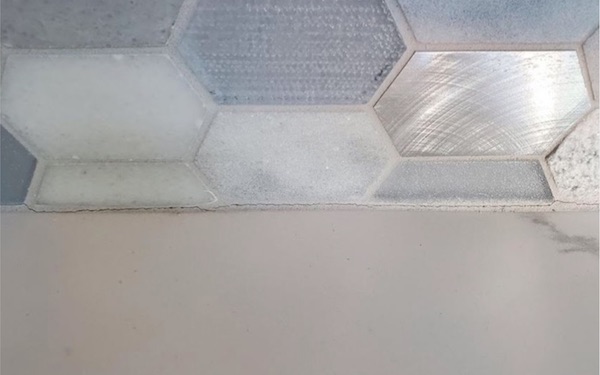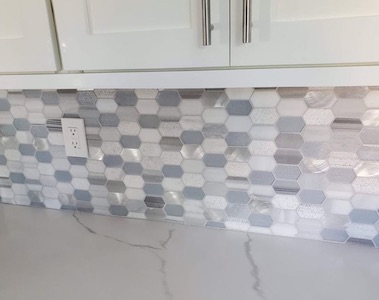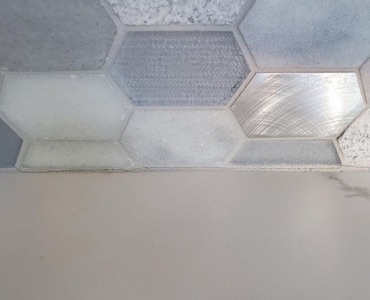QUESTION
At one of your workshops, I recall you saying the grout on a tile job, when meeting a horizontal joint with a vertical joint (or at 90-degree angle), should be a flexible caulk versus a non-flexible grout. I may not have all the terminology correct, but thought I remembered the concept. Can you take a quick look at the photos and let me know if a better product should have been used here to prevent cracking?
ANSWER
You remember correctly – ANSI 108.01 section 3.7.4 states the requirements for sealing expansion joints in tile work and TCNA Handbook Method EJ171 details the need for movement joints at perimeter joints (and other locations).
Perimeter joints are defined as locations where tile work abuts restraining surfaces such as perimeter walls, dissimilar floor finishes, curbs, columns, pipes, ceilings, and where changes occur in backing materials, but not at drain strainers.
Movement/soft joints are also needed at changes of plane – specifically inside corners (interior installations) and inside and outside corners (exterior installations). The reason for these types of joints is structural movement, expansion and contraction. The best type of material for these types of joints is a flexible sealant that meets the ASTM C920 rating.
Many setting-material manufacturers make ASTM C920 sealants that color coordinate with most, if not all, of their grout colors. Other manufacturers also make ASTM C920 sealants that can be used for this purpose.
An ASTM C920 sealant that is commonly used is a 100% silicone product that has been engineered to pass strict testing requirements. When applied correctly, this sealant adheres very well and is extremely flexible and durable. It is also much nicer to look at than a hard grouted joint that has cracked when the wall and countertop settle, move and shift.
When using ASTM C920 sealants in a joint that involves certain types of stone it is important to determine if the sealant has any chemical properties that may cause it to bleed into, stain, or discolor the stone. The best way to verify if this will occur is to check with the sealant manufacturer to discuss the sealant and the stone it will be used against and to do a mockup where the sealant is applied to the stone and allowed to cure, then examined for satisfactory results.
– NTCA Technical Team









